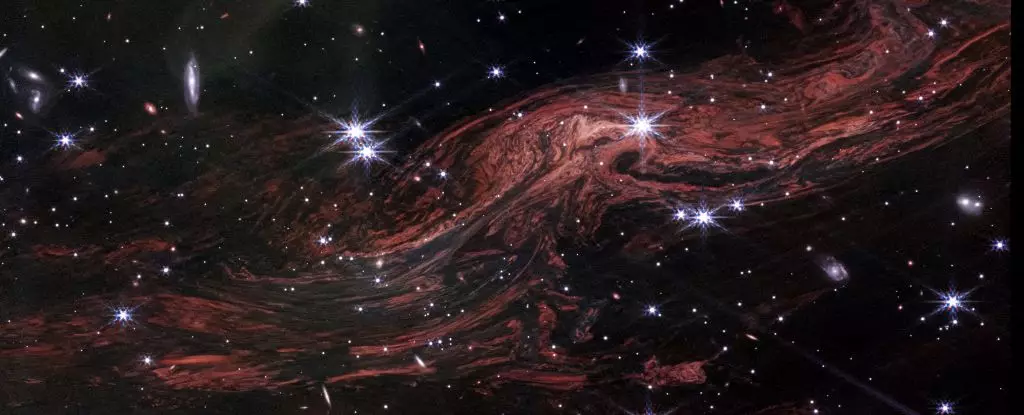The cosmos, vast and enigmatic, has always intrigued humanity, offering glimpses of phenomena far beyond our terrestrial existence. One of the most recent breakthroughs in our exploration comes from the James Webb Space Telescope (JWST). Newly uncovered images reveal the interstellar medium’s intricate structures in the vicinity of the supernova remnant Cassiopeia A, a star that erupted approximately 11,000 years ago, spanning an astonishing distance of about 11,000 light-years from Earth. These observations provide important insights into the physical processes that underlie cosmic evolution.
The interstellar medium, a tenuous collection of gas and dust floating between the stars, contains vital information about the lifecycle of stars and the evolution of galaxies. JWST’s ability to detect dim, red light allows astronomers to observe phenomena that were previously invisible to other instruments. In the case of Cassiopeia A, the newly released images shed light on the dynamic flow and turbulence of the dust surrounding this celestial remnant, facilitating a deeper understanding of its lifeblood—the interstellar medium.
At the heart of these observations lies a fascinating concept known as “light echoes.” This phenomenon occurs when a flash of light from a cosmic event encounters barriers, like clouds of cosmic dust, causing it to reflect and arrive at different times from the initial source. This mirrors the idea of sound echoes, producing delays based on distance and obstacles. Such echoes serve as windows into understanding the structure and dynamics of our universe.
Historically, the study of light echoes faced limitations; only the strongest events in dense clouds could be readily detected. For instance, the star V838 Monocerotis exhibited dramatic echoes due to its brightness. However, JWST’s sensitivity unlocks new avenues for exploration, as it can “see” through thinner layers of dust, far removed from the light source, that have eluded prior astronomical investigations.
One particularly surprising finding was the arrangement of the interstellar medium in dense sheets composed of intricate whorls, resembling the visible grain in wood. This level of detail, articulated by astronomers involved in the research, paves the way for groundbreaking discoveries. Specifically, it raises compelling questions surrounding the relationship between these structures and the magnetic field lines permeating space, suggesting that the interstellar medium’s turbulence may deeply relate to magnetic phenomena.
The Transformative Nature of JWST’s Observations
The implications of JWST’s observations can be likened to a medical imaging technique, such as a CT scan, used to visualize complex internal structures. As described by astronomer Armin Rest, the sequential snapshots gathered over time provide astronomers with a multifaceted understanding of cosmic structures. Researchers are now armed with the means to analyze the interstellar medium in three dimensions—an approach sure to yield unprecedented insights into fundamental astrophysical processes.
By identifying and studying layers of material on the scale of hundreds of astronomical units, progress can be made towards grasping the evolution of light echoes. This knowledge could illuminate fundamental aspects of magnetized turbulence, a phenomenon critical to understanding the formation and evolution of the universe.
Upcoming analyses of these findings are poised to generate a significant shift in the understanding of the interstellar medium. The wealth of data collected invites a fresh perspective on the relationship between stars and their surrounding environments. The recent presentations at the 245th Meeting of the American Astronomical Society underscore the excitement within the astronomical community, signaling a new era of investigation made possible by cutting-edge technology.
As scientists delve deeper into the echolocations of cosmic light and the turbulent dances of interstellar dust, they may be positioning themselves at the forefront of astronomical discovery. The role of JWST in unraveling these mysteries cannot be overstated, standing as a testament to human ingenuity and its relentless quest to comprehend the cosmos. Through transformative instruments, our narrative of the universe grows stronger, showing us that the intricate whorls of dust drifting between the stars are not just remnants of the past, but carrier signals of future understanding, still waiting to be decoded.
JWST’s vivid revelations about the interstellar medium and its structures marked a pivotal point in astrophysics, promising to enhance our grasp of the universe and ultimately our place within it.


Leave a Reply